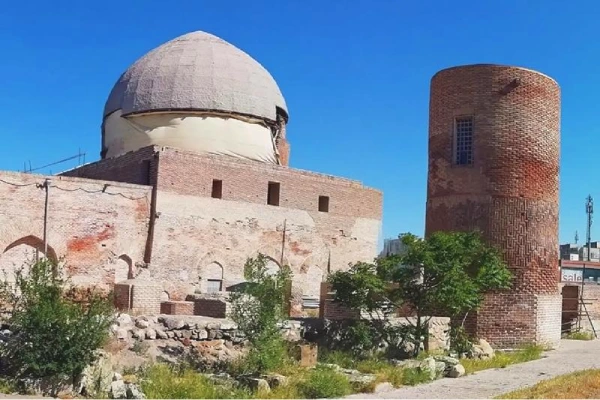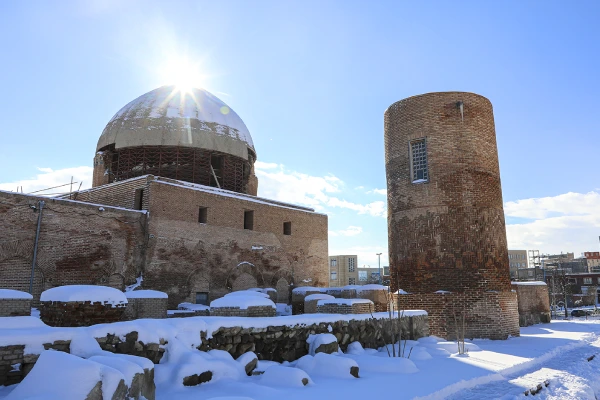
Jame Mosque of Ardabil





Jameh Mosque of Ardabil
Undoubtedly, after the conversion of Iranians to Islam in 653 BC, the construction of mosques became one of the most important religious sites, marking a significant turning point in architecture post-Islam. Today, it is unimaginable to think of a locality, village, city, or any place without the construction and maintenance of a mosque. Imagine walking through a neighborhood in Iran and suddenly hearing the call to prayer from a mosque; this sound and this divine melody are unlike any musical notes, and the experience is only possible when passing through Muslim cities around the world. Among the mosques in Iran, the Jameh mosques stand out as a spiritual, cultural, and social complex, leading the mosques of every city and district in terms of religious and social significance, as well as cultural and strategic importance. Visiting the Jameh mosques of each city is considered an essential and unparalleled experience for every tourist, both culturally and socially.
Before delving into the specifics, it’s better to familiarize ourselves with the history of mosques in Iran. During the time of the Prophet Muhammad, mosques were simple structures devoid of intricate decorations and complex elements, essentially just a walled space that even lacked a proper roof due to the conditions present 1400 years ago. Shortly after the establishment of mosques in Iran, these structures evolved significantly, becoming more complex than anyone could have imagined. The four-iwan mosque emerged as a pivotal point in the history of mosque construction and architecture. Four-iwan mosques are exemplary representations of Iranian and Islamic architecture, and they can be regarded as the pinnacle of Islamic architectural development in Iran and other Muslim countries. Among the four-iwan mosques, the Jameh mosques are recognized as the peak of architectural and cultural achievement in the Islamic world. The Jameh mosque serves not only as a spiritual place for performing the fundamental Islamic rituals, such as prayer, but also as a venue for cultural gatherings and exchanges.
Today, Jome Mosque are equipped with facilities such as libraries, kitchens, restrooms, multiple prayer rooms, classrooms for educating both laypeople and religious scholars, meeting halls, and even recreational areas for children. The presence of a Jameh mosque in every city and place in religious countries is considered a given and essential.
The Jameh Mosque of Ardabil is considered an exception among the Jameh mosques of Iran. Although this mosque has roots dating back to the Seljuk period, surprisingly, it is not classified as a four-iwan mosque. Furthermore, most of the mosque’s structure, except for the dome and the main courtyard, was destroyed during the Mongol invasion. At the time of its construction, this mosque was particularly renowned and widely used by many people for their religious practices. The main structure of the Jameh Mosque, or the Friday Mosque of Ardabil, was built in 878 AH during the Seljuk period, making it one of the oldest and most historic Jameh mosques in Iran, with an age of over 800 years.
This historic mosque, primarily constructed of brick, reflects the peak of brickwork artistry during the Seljuk era. Consequently, it was well-known for its portico, arches, and beautiful courtyard, becoming a symbol of the city of Ardabil. Unfortunately, due to the Mongol invasion, this mosque did not escape destruction and was soon reduced to rubble, with only the dome and the main courtyard remaining intact. During the Ilkhanate period, this religious site underwent numerous restorations and reconstructions, and today, only the historic dome has been unearthed from the debris, requiring restoration. Archaeological excavations indicate the grandeur and significance of this historic mosque, drawing considerable attention from archaeologists.
As mentioned, the Jameh Mosque of Ardabil significantly differs from other contemporary four-iwan mosques and is considered an exception in the historical evolution of Jameh mosques. Archaeological findings reveal that this mosque was constructed with remarkable ingenuity, featuring a complex and balanced network of corridors beneath it, measuring 80 centimeters in width and 190 centimeters in height, built at two-meter intervals. It is worth noting that this structure has undergone several restorations, remaining in use from the Seljuk and Ilkhanate periods through to the Safavid era. Additionally, it is highly likely that this mosque was built on the remnants of an ancient fire temple, with traces of this temple found deeper beneath, adding to its significance.
On the remnants of this fire temple, a large and spacious dome and a beautiful single minaret from the Seljuk period were constructed, shining like a gem in the city during its time. The network of corridors beneath the mosque played a crucial role in facilitating movement within this important historical site, showcasing the skill and expertise of the architects and builders from 800 years ago. It is remarkable to consider that, at a time when construction and transportation resources were minimal, such advanced features were incorporated into this historic mosque, features that are rarely found even in modern buildings today.
The main dome of this structure features multiple beautiful polygonal designs adorned with intricate tile work, with light wells incorporated into the corners and niches, allowing natural light to flood the space and enhancing the spiritual atmosphere. Along the mosque's walls, smaller arches were constructed, which, when connected, formed covered corridors that facilitated the movement of worshippers from other areas of the mosque’s courtyard to the main prayer hall and dome. As previously mentioned, this mosque, unlike other four-iwan mosques, lacks the primary structure typical of other Jameh mosques.
Ardabil is located in a mountainous and very cold region, making winter visits to this mosque somewhat challenging. However, thanks to modern infrastructure, visiting this site is possible even in winter and is certainly worthwhile. Given the mountainous nature of the area, visiting in spring and summer is particularly enjoyable.
Overall, considering that Iran is situated in a hot and dry region, places like Ardabil transform into a paradise during spring and summer. Therefore, it is highly recommended to visit this area and the mosque during these seasons when the plants and trees are in full bloom, creating an unparalleled attraction. Ardabil has many transportation facilities, making it easily accessible from any part of Iran. The city boasts an airport and a well-equipped bus terminal, allowing for convenient travel. There are numerous hotels, boutique hotels, and rural guesthouses in Ardabil, making accommodation easy. However, since Ardabil is one of Iran's most important tourist destinations, it is advisable to consult with a tourism specialist or travel agency before your trip to easily reserve your accommodation or flights.
Our team, with years of experience in tourism, is ready to promptly address your needs in this regard. If you plan to travel to this historic site and visit the Jome Mosque Ardabil , simply visit the Sana Persian website and share your needs with our colleagues, who will swiftly respond to your inquiries. Our colleagues at Sana Persian view you as part of their family, and you will see that, after your first visit, you will benefit from their continuous services from the beginning to the end of your journey as a member of the Sana Persian family. We hope to meet you soon in Iran, Ardabil, and at the Jameh Mosque of Ardabil . Looking forward to that day!
Contact Us
+989054577261